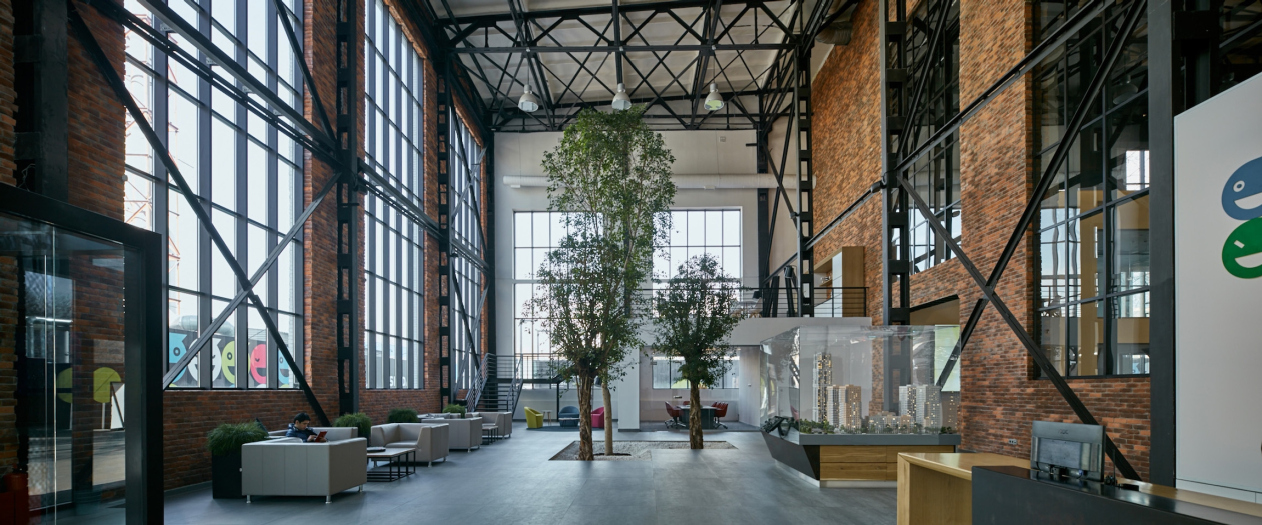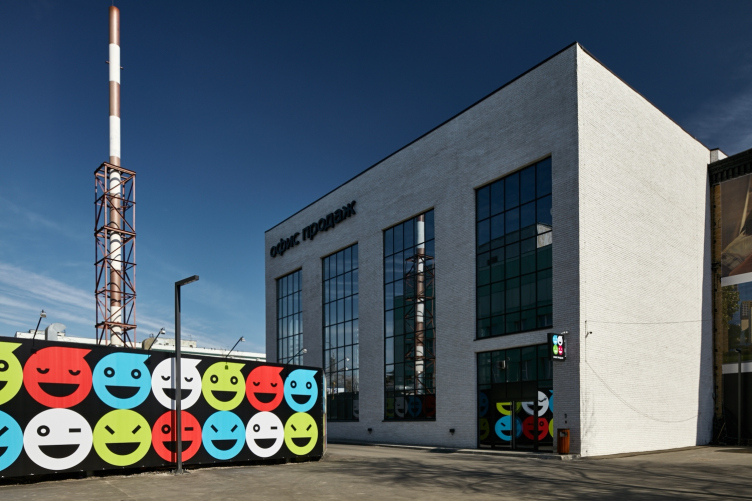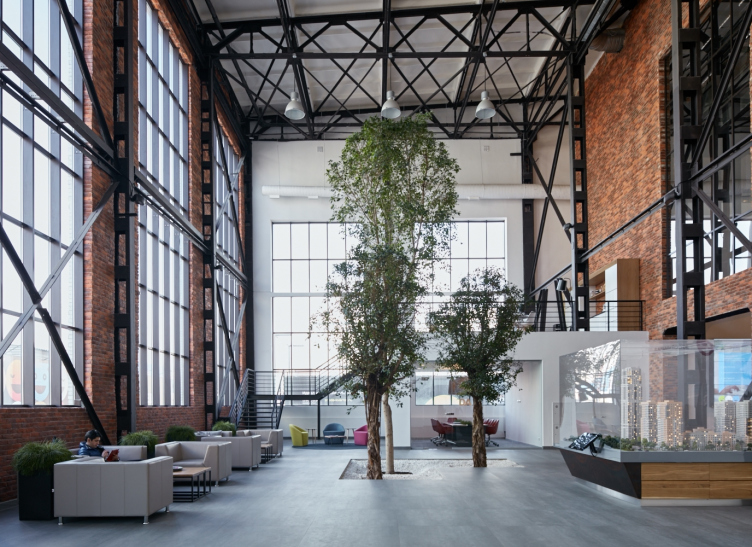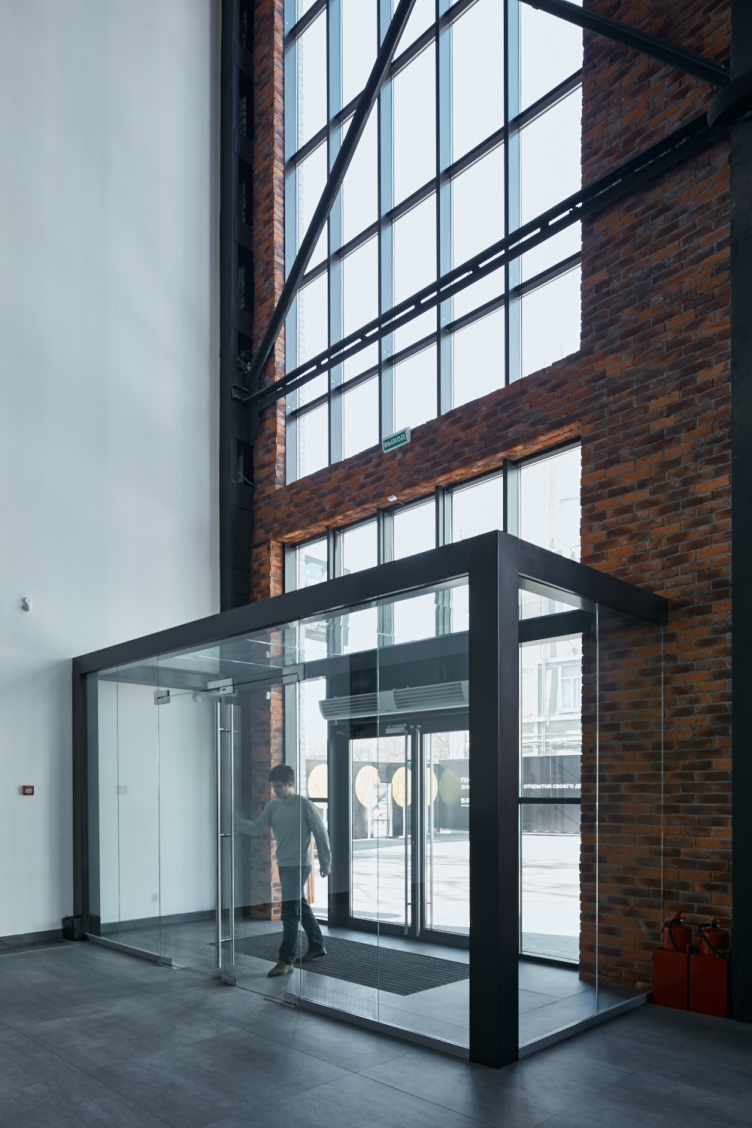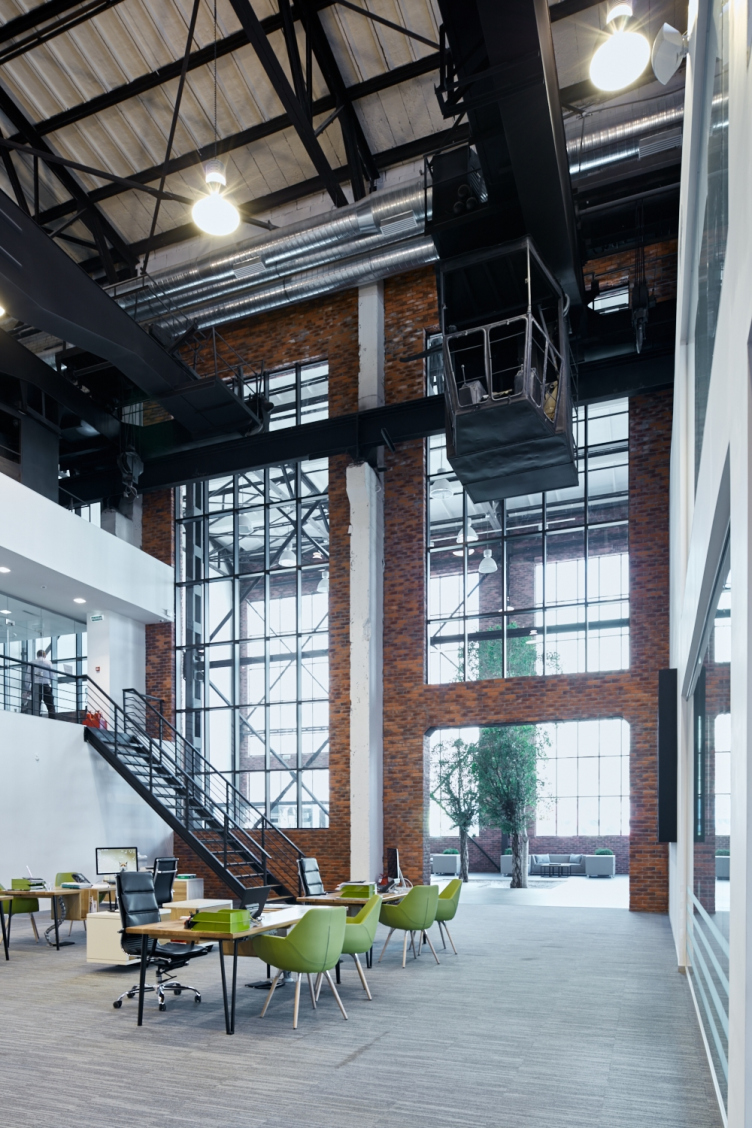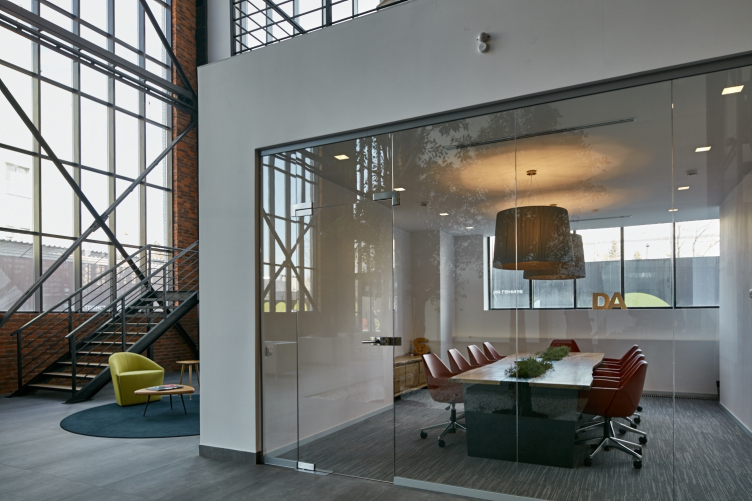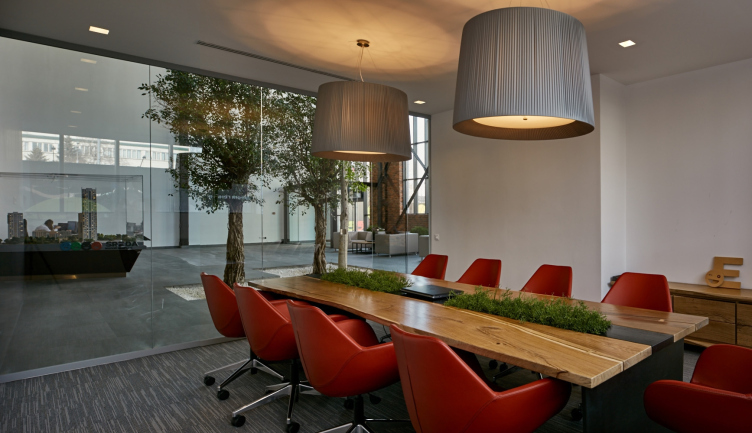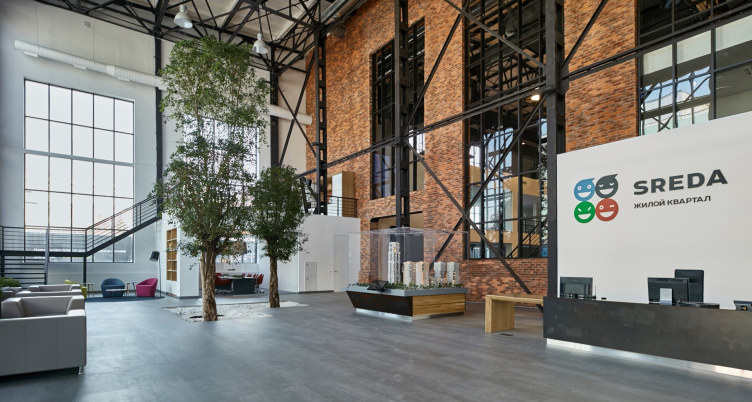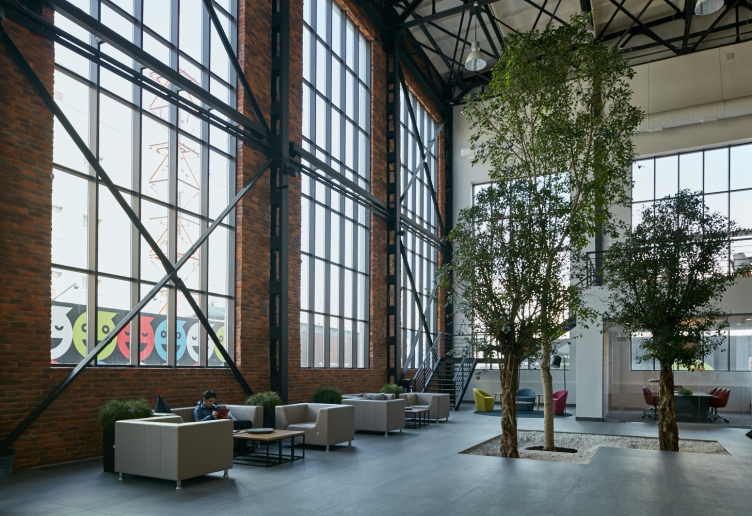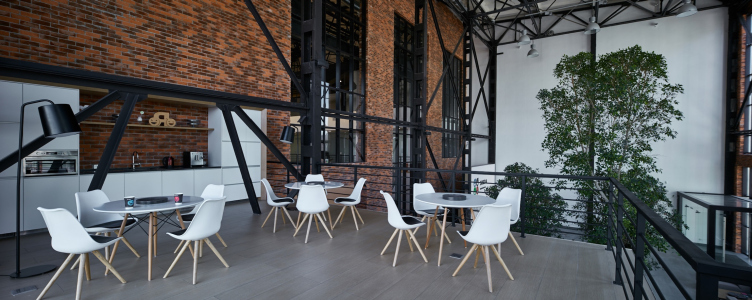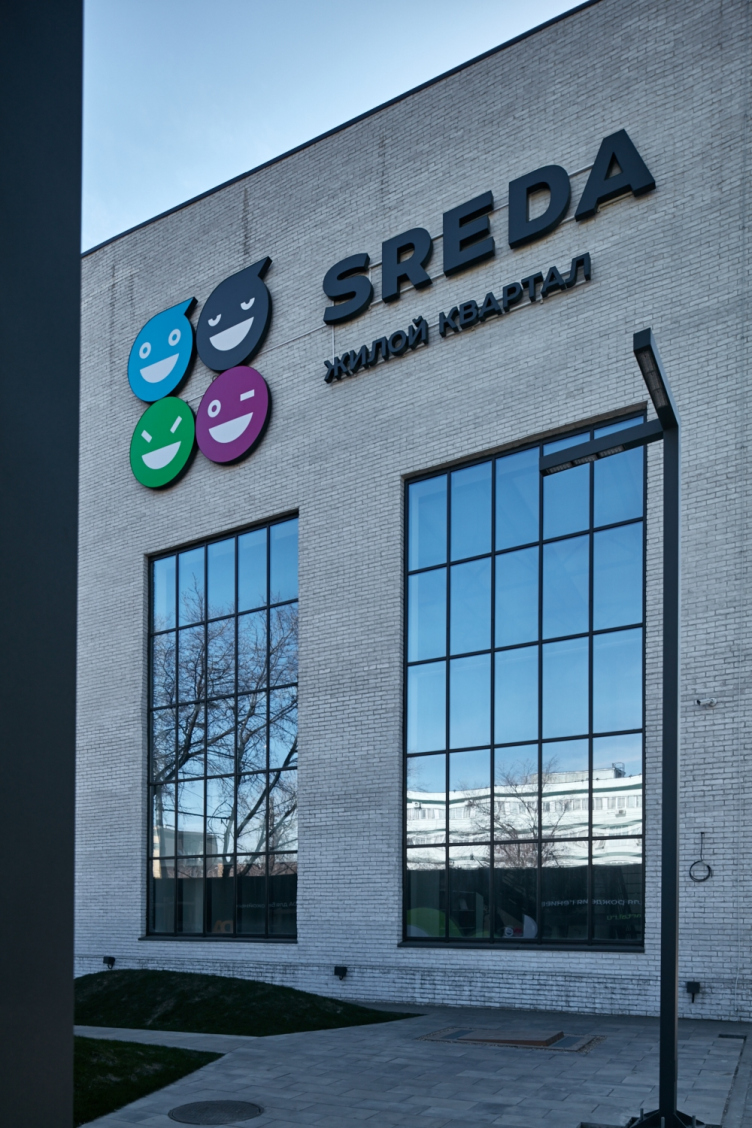A huge residential block is being built at the very beginning of Ryazansky Avenue, on the territory of Karacharovsky Mechanical Plant. Several 70s production buildings were beyond repair and have been dismounted. High-rise residential houses are being built in their place upon the project of TALLER DE ARQUITECTURA studio. In Ricardo Bofill’s concept of the residential development, hardly anything reminds of the industrial past: except perhaps the finish of the facades and the pattern of window embrasures, and even then – quite nominally. The main goal, set by the architects and developers of PSN Group, was to form a calm, man-oriented environment with multiple green areas.
However, the sales office of the future residential complex temporarily occupies part of a former production shop. At due time, this building, directly overlooking Ryazansky Avenue, will also be dismounted; but currently it is actively in use. The architects of UNK project, who dealt with the building reconstruction and developed the interiors, faced a rather difficult situation: the rigit and fashionable loft-stylistics, typical for such projects, did not fit with the ideology of a residential complex, and, consequently, a sales office; but to “hide” the industrial past of the construction completely, with its undoubted advantages, would have been strange – at the very least. “From the functional and technical point of view, the project was fairly clear and presented no difficulties. But to create a basic concept for it was not that simple. For Ricardo Bofill it was in a way easier, than for us,” says Nikolay Milovidov, managing partner of UNK project, “he could not afford not looking back at the stylistics of the demolished constructions; and we tuned out to depend on strongly binding characteristics of the building. We could try to play with contrasts or engage in a dialog”. As a result, they arrived at a compromise solution, reflecting both important intentions.
Sales offcie of PSN Group. Construction, 2015 © UNK project
Sales offcie of PSN Group. Construction, 2015 © UNK project
The office itself takes up two sections of the former production shop, 1,150 sq.m. Two rooms of a regular, rectangular form, with high ceilings are divided by a wall with distinctive stained-glass windows. This wall determined the functional zoning of the office. The first part includes an entrance lobby, reception, a meeting room, a café for visitors, a play area for children and, of course, a miniature model of the complex. The second part in the back contains the workplaces of the sales managers, meeting rooms, a bank office, the room of the directors and a separate closed volume with several life-size apartment layouts of the future residential quarter.
Sales offcie of PSN Group. Construction, 2015 © UNK project
Sales offcie of PSN Group. Construction, 2015 © UNK project
Despite the contraversy of the concepts, the architects’ first steps were aimed to preserve the striking features of the building. Due to the poor condition of the brick-work, the authors practically had to create a new façade. However, they managed to preserve the whole constructive base, including a fragment of the beam-crane, that unambiguously states the original purpose of the building. The texture of brick has also been restored with klinker tiles of several color-tones.
Sales offcie of PSN Group. Construction, 2015 © UNK project
Then, in both parts of the office, the architects constructed neutral white volumes from plasterboard on metal framework. They have simple geometry, but allowed to create an entresol level (again – necessary for loft spaces) and get the most out of the the height of the rooms. In the entrance zone of the roof of a small cubic volume, the architects placed a café for visitors, and the second volume – the more complex and massive one – is the one that arranges the working areas. At the same time, it is set so that it does not block the sunlight through the large but single opening. For this reason, all closed areas were moved to the back, and the rooms and passages closer to the opening were made transparent.
Sales offcie of PSN Group. Construction, 2015 © UNK project
Sales offcie of PSN Group. Construction, 2015 © UNK project
The blued steel reception desk and metal stair constructions support the loft theme. The same applies to the large kerlite boards on the floor, whose texture reminds a concrete self-leveling floor. But then, the architects break their own pattern: all of a sudden, natural trees force through the concrete floor, plants almost literally “grow through” the tables in the meeting rooms, the lamps get wrapped up in cozy textile lamp-shades, “homely-made” book cases and colorful soft furniture appear, natural wood is being widely used in the finish.
Sales offcie of PSN Group. Construction, 2015 © UNK project
Sales offcie of PSN Group. Construction, 2015 © UNK project
As a result, having taken everything from the existing building, and preserved the high and light spaces, striking metal constructions and the warm texture of brick walls, the architects completely changed the mood of the interior, leaving spare place for the future and letting in the modern, green, calm and comfortable city – the kind of environment, that the new residential quarter is supposed to be. “We tried to disclose the whole essence of the future object in a small temporary show-room”, says Yuliy Borisov, the managing partner and chief architect of UNK Project, “production area is gaining its value again, comes back to the city and its residents. And that is the most important thing”.
Sales offcie of PSN Group. Construction, 2015 © UNK project
Sales offcie of PSN Group. Construction, 2015 © UNK project

